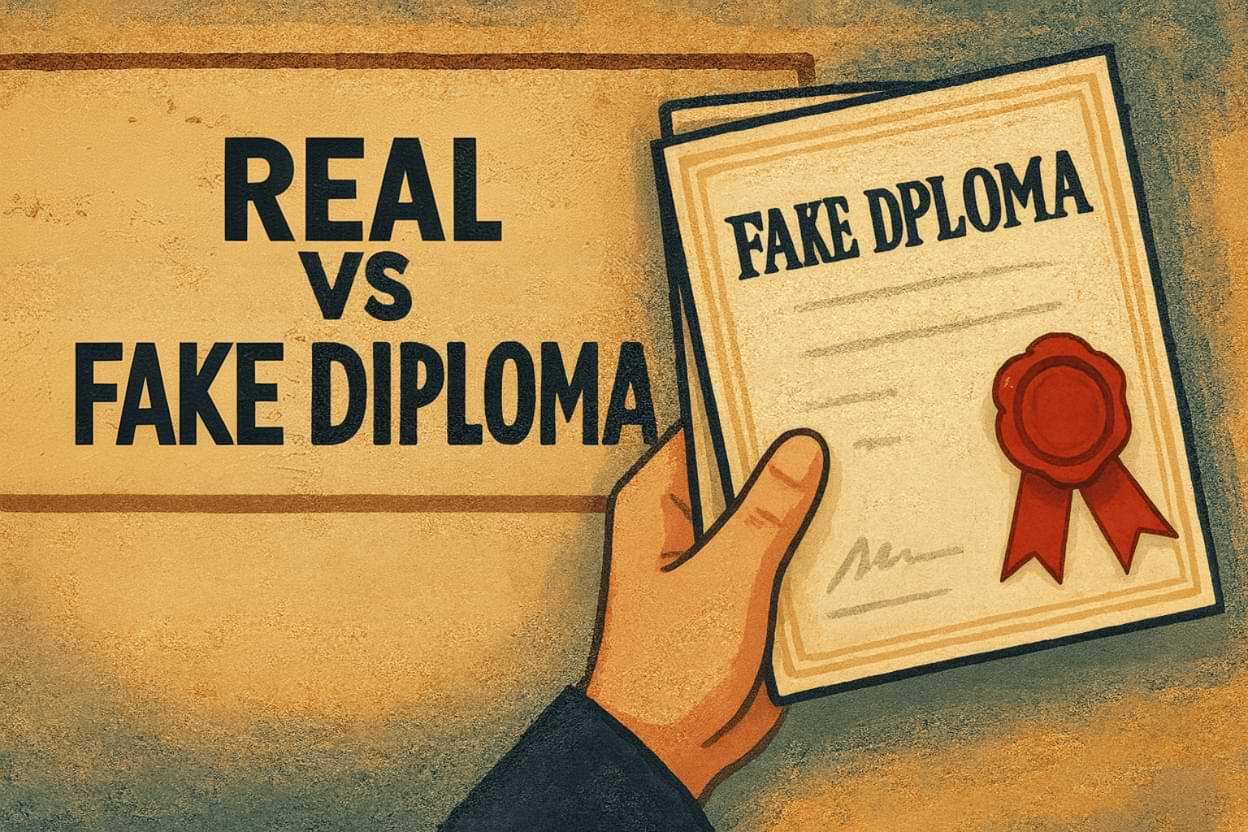
Confused about choosing a Fake Diploma or a real one? Compare costs, uses, and benefits to make the best choice for your goals.
What’s the Difference Between Fake and Real Diplomas?
A College Diploma or High School Diploma from an accredited institution proves your education and skills, while a Fake Diploma is a replica for non-fraudulent uses like décor or replacing lost documents. Here’s a quick comparison:
| Feature |
Fake Diploma |
Real Diploma |
| Cost |
$50–$200 |
$10,000–$50,000+ |
| Legality |
Legal for décor or replacement; risky if used to deceive |
Fully legal and accredited |
| Use Cases |
Home display, replacing lost Diploma |
Job applications, further education, professional licensing |
| Verification |
Cannot be verified by official channels |
Verifiable via National Student Clearinghouse or schools |
| Risks |
Job loss or reputational hit if misused |
None when earned legitimately |
This table highlights why choosing the right diploma depends on your needs—let’s dive deeper!
When to Choose a Fake Diploma
Fake Diplomas are perfect for specific, legal purposes. They’re affordable and can look incredibly realistic, making them ideal for:
- Replacing a lost or damaged Transcripts or diploma for personal keepsakes.
- Decorating your home or office with a proud display of your achievements.
- Celebrating personal milestones without formal credentials.
High-quality replicas use realistic paper, seals, and fonts, ensuring they look authentic for non-fraudulent uses. Always choose a reputable provider and avoid using replicas to mislead employers or schools to stay risk-free.
Potential Consequences of Misusing a Fake Diploma
Using a Fake Diploma to deceive employers or institutions can lead to manageable consequences, but it’s worth understanding the risks:
- Job Loss: Over 80% of U.S. employers verify credentials using services like the National Student Clearinghouse. If a fake is detected, you could lose a job offer or position.
- Reputational Impact: Being caught might cause temporary embarrassment, but you can recover by pursuing legitimate credentials.
- Limited Opportunities: Some industries may flag misuse, though this is uncommon and often temporary.
Example: In 2024, a marketing assistant lost a job after their fake degree was spotted during a background check, but they quickly enrolled in an online course to rebuild their resume.
Why Real Diplomas Win Long-Term
Real diplomas, like a High School Diploma or College Diploma, offer unmatched benefits for your career and growth:
- Career Security: Accredited credentials are universally accepted, opening doors to jobs and promotions.
- Skill Development: Earning a real diploma builds practical skills that employers value.
- Credibility: Verified credentials boost your professional reputation without risks.
While real diplomas require time and investment, they provide lasting value and peace of mind.
How to Spot a Fake Diploma
Whether you’re an employer or considering a replica, knowing how to spot a fake is key. Based on industry insights, here are tips to verify authenticity:
- Check Accreditation: Ensure the institution is recognized by local accreditation bodies, like Ofqual in the UK or regional U.S. agencies.
- Examine Details: Look for misspellings, incorrect seals, or missing QR codes. Real diplomas often have embossed seals or verifiable digital links.
- Verify Directly: Contact the school or use services like the National Student Clearinghouse to confirm credentials.
These steps help employers avoid fakes and ensure you’re choosing a quality replica for legal uses.
FAQs About Fake vs. Real Diplomas
What’s the difference between a Fake Diploma and a real one? A Fake Diploma is a replica for décor or replacement, not accredited or verifiable. A real diploma, from an accredited school, is verifiable and valid for jobs or education.
Can I use a Fake Diploma legally? Yes, for non-fraudulent uses like home décor or replacing a lost Diploma, it’s completely legal and safe.
What are the risks of using a Fake Diploma? Misusing a Fake Diploma for jobs could lead to job loss or reputational challenges, as 80% of employers verify credentials.